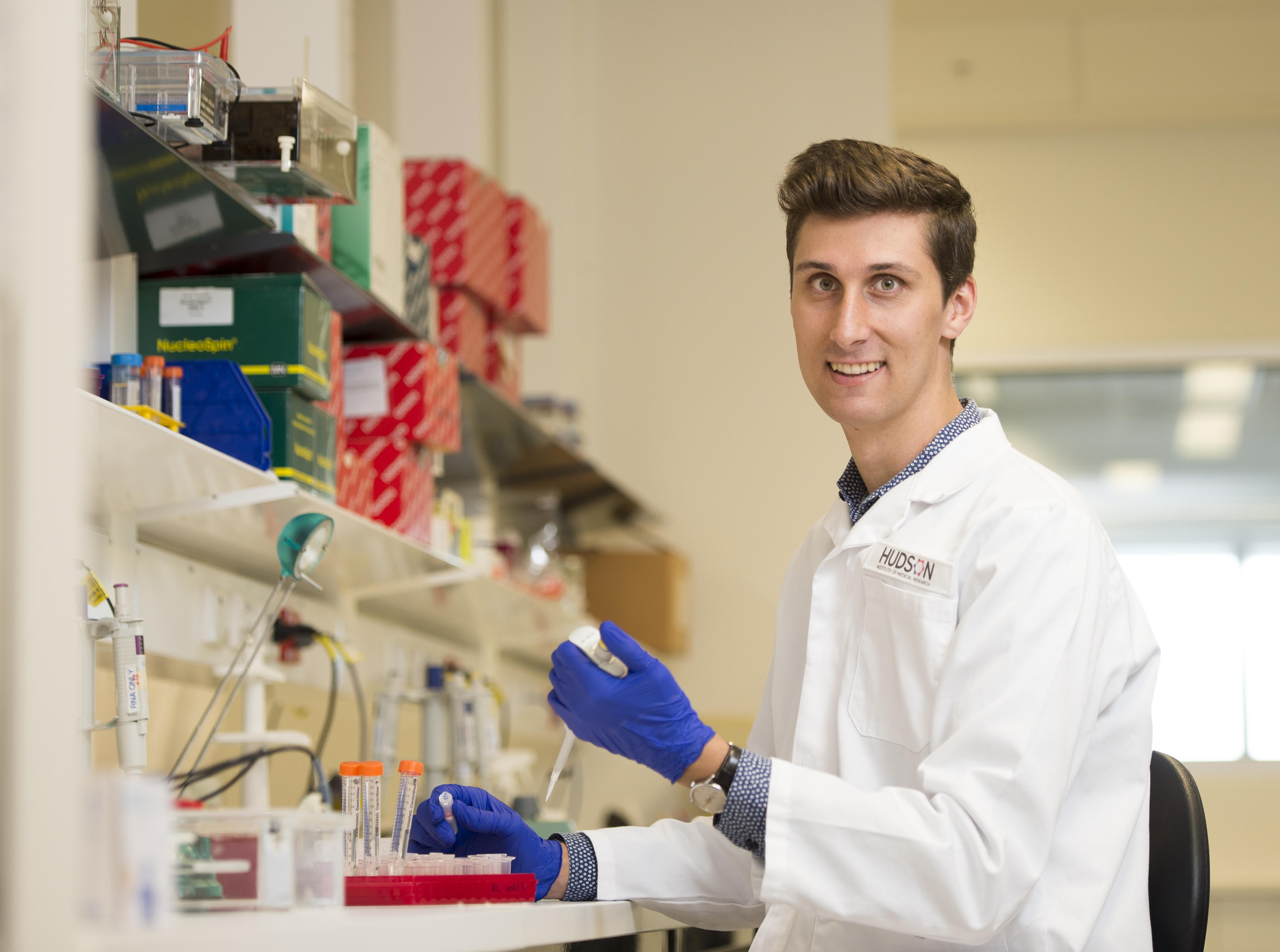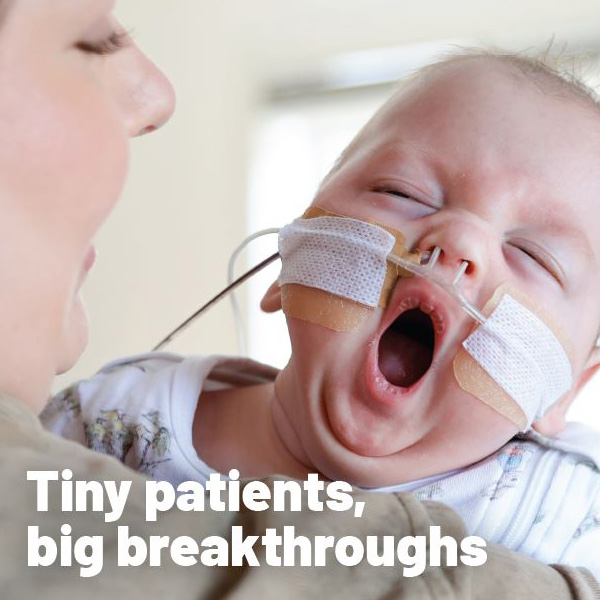Giving little lungs a fighting chance
By Hudson Institute communications

For every 4000 babies born, one baby will be born with lungs so underdeveloped (Congenital Diaphragmatic Hernia) that they will die soon after birth, or, if they survive, they will face lifelong neurological and respiratory problems.
Despite the physical limitation of being born with small lungs, promising research is showing that these babies may have a greater chance of survival if the clamping of their umbilical cord is delayed.
Overcoming congenital diaphragmatic hernia
The condition faced by these newborns is called congenital diaphragmatic hernia (CDH). For babies with CDH, a hole forms in their diaphragm early in their fetal development.
This hole allows the baby’s stomach and intestines to move into their chest, preventing their lungs from growing. When they are born, their lungs are often too small sustain life without considerable medical assistance.
While these babies are in the womb, their small lungs do not cause them difficulty because they are sustained by oxygen from their mother’s placenta, delivered via the umbilical cord.
However, the transition from fetal to neonatal life is particularly difficult for babies with CDH: immediately clamping the umbilical cord at birth forces these babies to become entirely reliant on their underdeveloped lungs for oxygen.
The benefits of delayed cord clamping
Hudson Institute’s research has found that if umbilical cord clamping is delayed until after a newborn has filled its lungs with air (physiologically based cord clamping), then oxygen delivery to the brain is maintained at safe levels during the transition to newborn life.
Fetal and Neonatal Health PhD student Aidan Kashyap likens a baby’s umbilical cord to a scuba diver’s life-sustaining tank of oxygen.
“Clamping the umbilical cord before a baby is ready to breathe is like disconnecting a scuba diver’s oxygen tank before they have reached the surface,” he said.
“With physiologically based cord clamping, we wait until the baby is ready to breathe before disconnecting them from the life-support of mum’s placenta.”
Mr Kashyap also said that this more stable transition to newborn life is also associated with better blood flow through the lungs for at least the first two hours after birth.
Delayed clamping for babies requiring resuscitation
While the World Health Organization already recommends delayed cord clamping for all healthy babies, this practise hasn’t been seen as feasible for babies requiring resuscitation at birth. This is because the resuscitation equipment is in the corner of the delivery room, away from the mother.
However, several clinical studies have now demonstrated the feasibility of using innovative devices to assess, resuscitate and ventilate infants at the maternal bedside, including the Baby-DUCC trial for pre-term babies, led by Dr Douglas Blank at Monash Children’s Hospital.
International collaboration in the works
From the success of these pre-clinical studies for CDH, alongside the clinical studies showing the possibilities of resuscitating infants at the maternal bedside, Mr Kashyap says taking the next step in furthering cord clamping research is on the horizon.
“Our current study suggests that the benefits of physiologically based cord clamping also extend to babies with CDH, so we are working closely with international collaborators to develop a clinical trial specifically for these infants with CDH,” he said.
Read the full report in BMJ Journals, titled Physiologically based cord clamping improves cardiopulmonary haemodynamics in lambs with a diaphragmatic hernia.
CDH Australia supports families affected by congenital diaphragmatic hernia. Information about support services is available on their website, www.cdh.org.au
Congenital diaphragmatic hernia (CDH) facts
- 1 in 4000 babies are born with congenital diaphragmatic hernia (CDH).
- CDH restricts growth of the baby’s lungs during development.
- For babies born with CDH, birth is a treacherous experience. Early in their development, a hole forms in the diaphragm, which allows the baby’s stomach and intestines to move into their chest and prevent their lungs from growing. When they are born, their lungs are often too small to sustain life without considerable medical assistance.
- Around 30 per cent of babies born with CDH die soon after birth, while survivors may face lifelong neurological and respiratory problems.
Collaborators | Monash University; Monash Health; The Royal Women’s Hospital; Murdoch Children’s Research Institute; Erasmus MC, Rotterdam, The Netherlands
This research was supported by | CDH Australia, Royal Australian and New Zealand College of Obstetricians and Gynaecologists (RANZCOG) Foundation, Cabrini Foundation, Victorian Government’s Operational Infrastructure Support Program
In this article
About Hudson Institute
Hudson Institute’ s research programs deliver in three areas of medical need – inflammation, cancer, women’s and newborn health. More
Hudson News
Get the inside view on discoveries and patient stories
“Thank you Hudson Institute researchers. Your work brings such hope to all women with ovarian cancer knowing that potentially women in the future won't have to go through what we have!”




